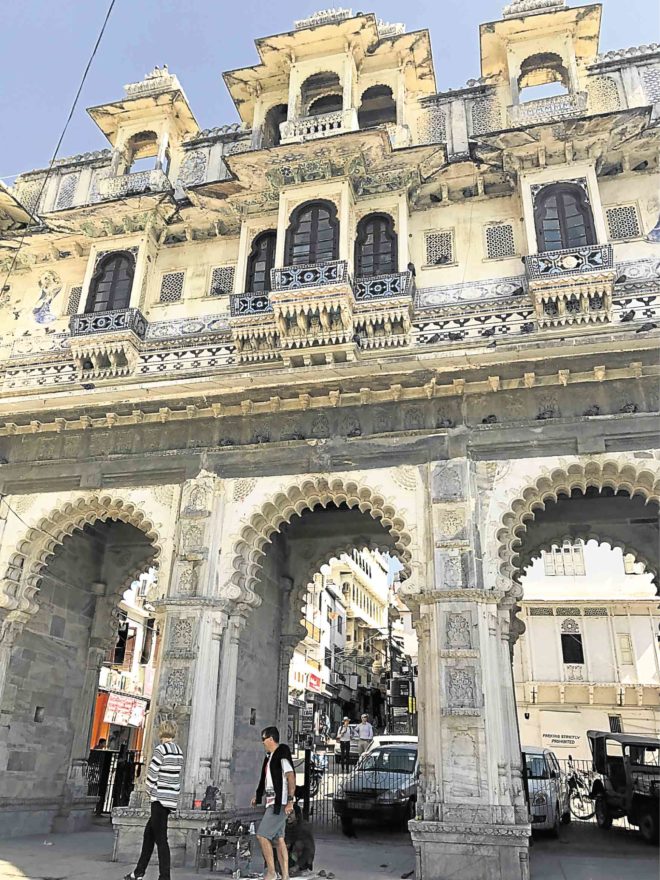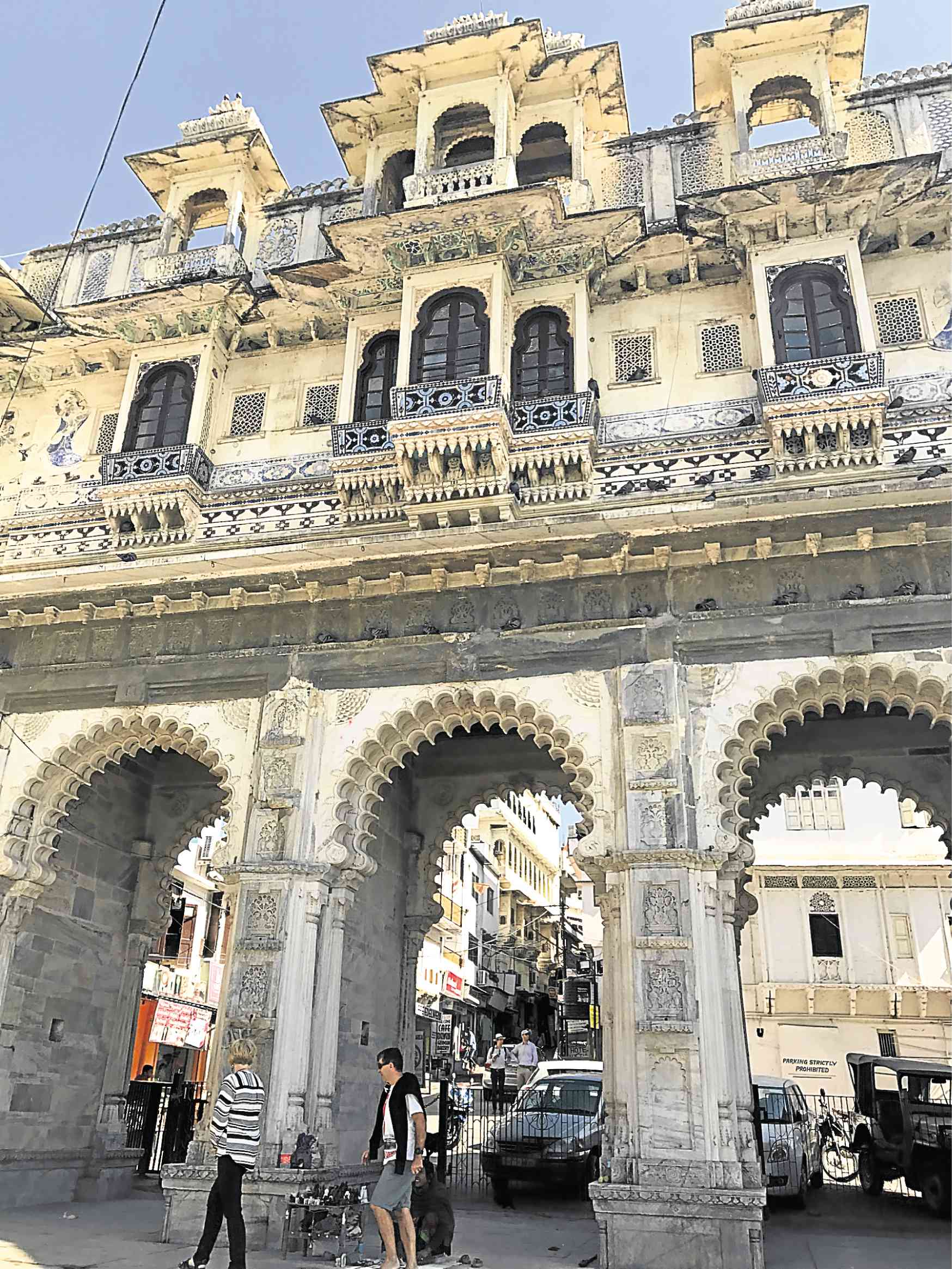
Blitzing through a city in an Indian state is not enough to capture its complexity, especially if it’s the historic state of Rajasthan, once known as the land of kings.
Rajasthan is one of India’s most popular destinations, famous for its palaces, resplendent forts and rich culture.
At the tail-end of my retreat in Mount Abu, I bravely took a cab alone from the hill station to Udaipur. The journey itself was exhilarating.
Leaving at sunrise, the cab passed the zigzag road lined with skeletal trees hovering over boulders. The horizon was a band of orange hues, softened by white mist.
By 7:30 a.m. the craggy silhouette of the famous Aravali Range, which spans the entire Rajasthan all the way to neighboring Gujarat state, was etched against the sky.
Hitting the flat lands, I saw the mist drift through the wheat fields dotted with little stone worship places. By then, the sun had become a bright ball.
On the two-and-a-half-hour drive, I was lost in the beauty of the scenery. As the cab approached Udaipur, the terrain became dense, with lush trees on the mountains and mud and stone houses built on hills.
Sense of arrival
An arched tunnel, framed by chattris, dome-shaped pavilions typical of Rajasthan, welcomed us. As in any old city in Rajasthan, the sense of arrival was always heightened by the vista of bungalows and bullock carts competing with cars on a two-lane street.
Sukhadhia Circle, a pond with a marble fountain, capped by a symbolic wheat ear, indicated that I was in Udaipur’s city center. It was once the capital of the Mewar Kingdom, whose kings believed they were custodians of Hindu civilization. It looked like any old Indian city—tangled electrical and phone lines, whirring motorcycles, sidewalk vendors and pedestrians.
We passed through the Bada Bazaar, the main market famous for its handicraft, street-side shops peddling camel leather bags, lamps and garments, tailoring shops, the Tibetan market which sold export overruns, and a school.
The city didn’t feel crowded, as it was dotted with parks and artificial and natural lakes. The cab driver pointed to the Gulab (“rose” in Hindi) Bhag, Udaipur’s largest rose garden and zoo, and Nehru Garden across Fateh Sagar Lake.
In any Udaipur itinerary, the tourist is always brought to the famous City Palace on yet another well-known landmark, Lake Pichola. My cabbie said it takes at least half a day to skim through 11 palaces, many of which have been converted into museums showing weaponry, paintings, tapestries, glass mosaic art frescoes and furniture, crystal and porcelain figurines.
Taking photos was prohibited, and if a visitor insisted, there was a hefty price to pay. The walls were encrusted with mirror work, typical of Rajasthani art, and in some parts, with delicate tile work.
The façade of the City Palace was a massive granite and marble fortress. Visitors are amazed that behind the imposing structure is an overwhelming maze of courtyards, corridors, hanging gardens and terraces overlooking the lake. The City Palace is demarcated by arched gates and an arena for elephant fights.
As if these weren’t enough, the Jag Niwas, famous for being a pleasure palace in the 18th century, had been converted into a luxury hotel. Its claim to fame was that it was a location in the James Bond film “Octopussy.”

Haveli
Spirituality
Since spirituality is at the core of Indian culture, a tour is not complete without visiting a temple. Marble elephants made a powerful impression at the entrance of the three-story Jagdish Temple. It was embellished with the signature Indo-Aryan carved pillars and ceilings and resplendent wall paintings. The focal point was a flight of white marble steps leading to the statue the god Vishnu, carved out of a single black stone.
I was equally awed by the hordes of international tourists who visit the palace every day. Some of the Indian guides were fluent in French, Spanish and German.
The cab then drove to the Gaungar Ghat, a must-see on the lakefront, according to locals. We wound through little streets, crowded with old brick and stone houses with carved wooden windows, until we reached another must-visit place.
Bagore ki Haveli or Bagore’s Mansion, built in the 18th century, is a museum featuring Rajasthani musical instruments, turbans, costumes, crafts and artworks.
A haveli is a mansion with a central courtyard and two other courtyards. They were originally built to give women privacy. Portions of the mansion were segregated between the men and the women. Although the haveli is not as lavish as the palaces, its history was no less royal.
Each room depicted how the royals slept, bathed, dressed up, prayed, played chess and entertained themselves. The corridors and terraces faced the central courtyard. The top deck of the mansion and its chattris faced the scenic Lake Pichola.
I then roamed outside Gaungar Ghat, on the steps leading to the lake, where musicians played and sold native instruments, while tourists took selfies in front of the arched gates.
The lakeside was tranquil, as flocks of birds flew over the waters. Other times, it could get noisy with tourists and occasional stray animals.
Our last stop was a 10-km drive from the city center to Celebration Mall. Tourists who are fussy about clean public toilet will be delighted. Although the layout is modern, with a food court at the top floor, an activity center and shopping zones, a lot of the motifs were derived from Rajasthan architecture.
There were still many things to do in Udaipur, such as watching the sunset from the hilltop Monsoon Palace or a day-long voyage tour. We haven’t mentioned the shopping. These give me good reason to come back one day, perhaps for a longer blitz. —CONTRIBUTED









































